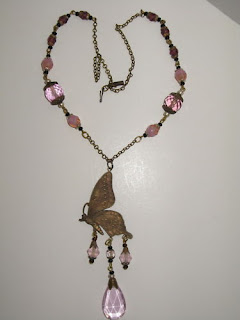Michelle Obama is known to love vintage costume jewellery. In particular, she seems to favour big brooches and very big necklaces. This can only be good news!
She has her own unique way of wearing them, sometimes in groups of up to three at a time. As times are hard for many vintage costume jewellery sellers, the personal choice of the American First Lady is sure to give sales a much needed boost.
For months I have been seeing pictures of Michelle Obama with outrageously large brooches and sometimes two or three huge ones all worn together. Whilst it is not the traditional way of wearing them, she seems to have made them into her own style and personal fashion statement.
It can be said that this first lady is no follower of fashion. Instead, she is creating her own style using vintage jewels of the past and putting a modern spin on them.
Many of her brooches could be called ‘statement’ pieces. I have never seen an image of her wearing a small brooch. The vivid green one you see in the images is in extraordinarily good condition considering it is made of papier-mâché some time in the 1960’s.
The First Lady seems to really like the big floral brooches, the bigger and the brighter the better. When considering that she really does have the pick of jewellery to wear, it is quite something to realize that she loves vintage brooches and wears them in
the way she sees fit. She is certainly an individualist and that is rare, especially amongst politicians wives.
Michelle Obama does seem to have the uncanny knack of making a vintage brooch into a brooch of a very new style – and one all of her own.
Another rare way of wearing vintage brooches is to clip them on to the neckline of a simple dress to give it an instantly individual style.
Michelle Obama is her own person and has a style completely her own, despite being married to the man who is arguably the most powerful man on earth.







 Genuine vintage Czechoslovakian jewellery has a huge number of admirers and collectors worldwide. Nothing looks so good on a vintage summer dress than a perfect Bohemian brooch or string of Czech crystal beads. Or perhaps one of the increasingly rare pieces as shown above and below (from my personal collection).
Genuine vintage Czechoslovakian jewellery has a huge number of admirers and collectors worldwide. Nothing looks so good on a vintage summer dress than a perfect Bohemian brooch or string of Czech crystal beads. Or perhaps one of the increasingly rare pieces as shown above and below (from my personal collection).











































